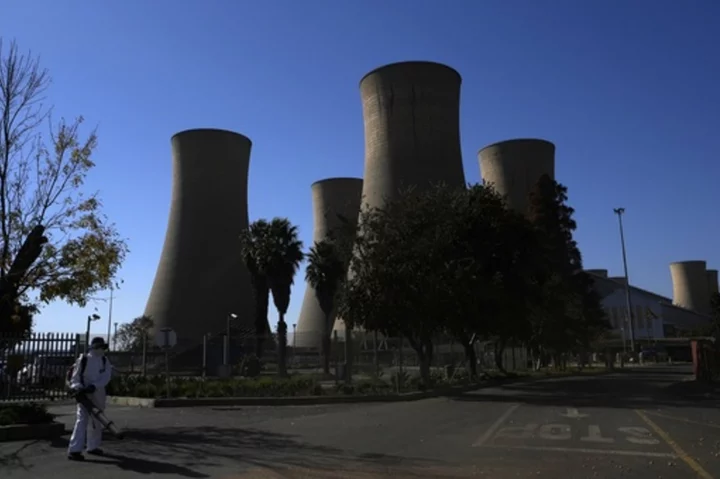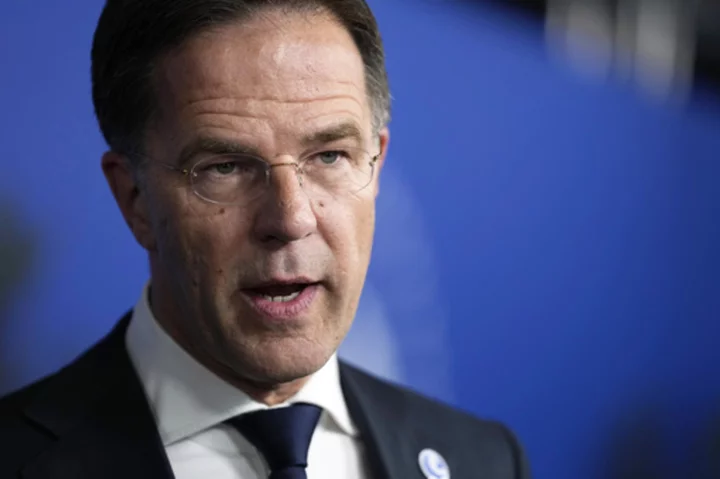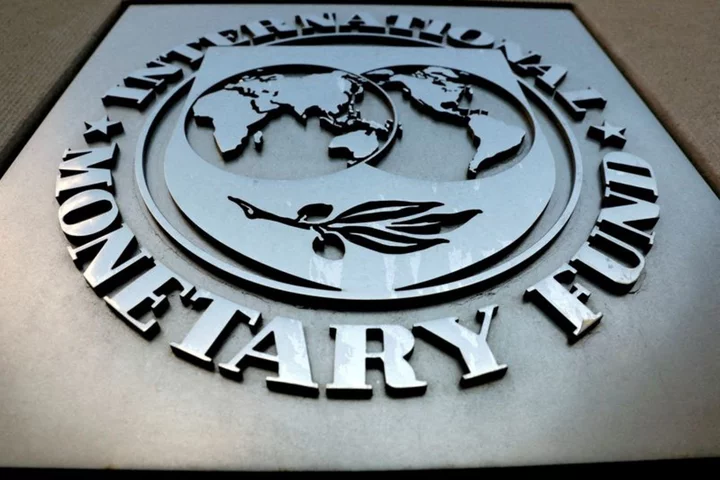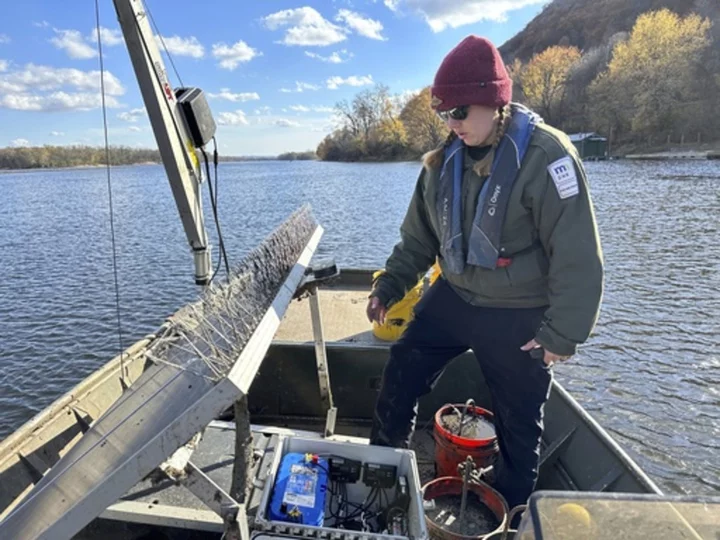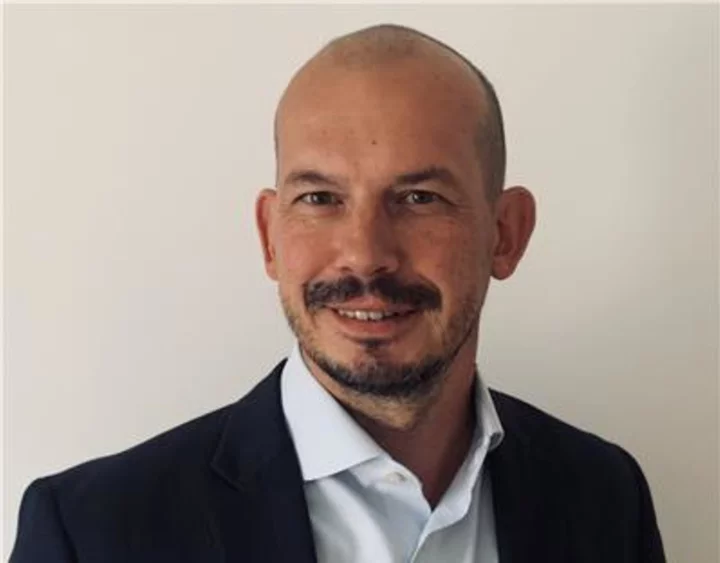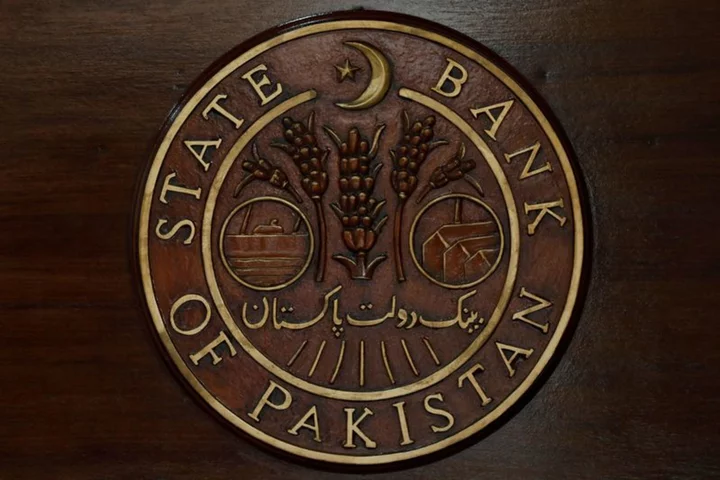MIDDELBURG, South Africa (AP) — Plumes of heat-trapping pollutants last billowed from the giant stacks of Komati Power Station in October, when the coal-fired plant that fed South Africa’s hungry electrical grid for more than half a century was shut down to make way for a solar, wind and battery storage plant.
Converting Komati to be part of the clean energy revolution is seen as an important test case for coal-reliant South Africa, the world's 16th-largest emitter of greenhouse gases, and developing nations elsewhere. It's supported by $497 million, most of it from the World Bank.
The problem, energy experts say, is that almost all that money is in the form of loans that can be difficult for developing nations to repay. And that risks hobbling the global effort to cut emissions and limit global warming to 1.5 degrees Celsius (2.7 degrees Fahrenheit) above pre-industrial levels to stave off the worst effects of climate change.
For South Africa, which needs an estimated $38 billion over the next five years to meet its climate goals, the structure of the Komati funding should be concerning, said Andrew Lawrence, an analyst and senior researcher at the University of Witwatersrand in Johannesburg.
Not only is most of the money in loans, but the loans are dollar-denominated. South Africa's rand will depreciate against the dollar, “so that is going to become an increasingly snowballing financial burden,” Lawrence said.
As world leaders open a two-day global finance summit Thursday in Paris, a central question will be: How can they get the developing world the finances they need to move away from fossil fuels while also growing their economies?
“We can’t in the developing world say, look, you got rich by polluting, we’re going to wait till we get rich and then we’re going to start doing what you’re doing now,” said Avinash Persaud, special envoy to Barbados Prime Minister Mia Mottley on climate finance. “We could say that, but that isn’t the solution for the planet. What we need to do is finance the transition so it can be scaled up and done faster than it would otherwise get done.”
Persaud was one of the architects of the Bridgetown Initiative, first put forward by Mottley at last year's United Nations climate summit in Egypt and now expected to be a cornerstone of the Paris summit. The initiative, named for the Barbados capital, would overhaul the way development lending works to aid developing nations struggling under rising debt from climate damage.
It calls for loan clauses that allow for suspending payments when a country is hit by a natural disaster or pandemic, thus freeing up millions of dollars that could be spent on relief and rebuilding. Barbados has been a pioneer in such clauses, last year issuing its first sovereign bond with such a provision.
The plan offers several ideas for lowering borrowing costs for developing countries, including offering loans to climate-vulnerable countries at below-market rates. Another would have the World Bank and other multilateral development banks offer currency risk guarantees so investors aren't worried about currency fluctuations.
Loans made in local currency can help protect recipient countries if their currencies are downgraded, said David Uzsoki, who offers research and advice on sustainable finance to investors and government officials via the International Institute for Sustainable Development. But international lenders needed to back large projects are generally not willing to take on that risk, he said.
Riya Saxena of the New Delhi-based clean energy non-profit group RMI India said that makes it all the more important to come up with innovative financial structures that guard international investors from currency risks.
A panel of scientists convened by the United Nations estimated that $2.4 trillion is needed each year by 2035 if the world is to limit warming to 1.5 degrees Celsius. Much of that need is in developing countries, who account for nearly 80% of the world’s population and whose leaders have made repeated promises to bring their people out of poverty.
Growing economies and improving living conditions have a cost, though, especially when the growth is fueled by fossil fuels. While 79% of greenhouse gases emitted in the last 170 years are from rich countries, developing countries have contributed up to 63% of annual emissions in recent years, according to an analysis by the Center for Global Development.
And pressure to continue using fossil fuels can be intense. South Africa, which gets 80% of its electricity from coal, is dealing with a power shortfall that has led to rolling nationwide blackouts that have damaged the economy. With national elections looming next year, President Cyril Ramaphosa this spring said South Africa might delay decommissioning some coal plants to ease the blackouts.
Suranjali Tandon, an associate professor at the National Institute of Public Finance and Policy, a research institute under India's Ministry of Finance, was dubious about the “massive shift" in global finance that the Bridgetown Initiative would require. She suggested changes might be easier at a regional level — for example, dedicating tax revenues from fossil fuel users in a region to climate finance needs in that region.
Other climate experts fear the World Bank and other development banks just don’t have the money to support the clean energy transition in the developing world.
But Franklin Steves, of the environmental think tank E3G, said he saw momentum for the Bridgetown Initiative and felt some optimism for Paris.
“There are some really good proposals on the table, and I hope the Paris summit should be kicking off processes around all of these,” he said.
Back in Komati, about 2 hours northeast of Johannesburg, the former coal plant looked deserted this week, with only security guards and cleaners on site and large parking lots sitting empty. In a community where everyone depended on coal jobs to make ends meet, groups of men could be seen on most corners, hoping to be picked up by contractors in trucks for temporary jobs as gardeners or cleaners in nearby settlements.
Work on repurposing the plant is expected to take up to five years. Some of the World Bank money is to go toward retraining former plant employees; this week, power utility Eskom invited bids for a plan to mitigate the effect of the plant's closure on surrounding communities.
___
Arasu reported from Bengaluru, India.
___
Associated Press climate and environmental coverage receives support from several private foundations. See more about AP’s climate initiative here. The AP is solely responsible for all content.
___
Follow AP’s climate change coverage at https://apnews.com/hub/climate-and-environment

